Intense Oxidation Technology (IOT), Nanobubble Technology (NBT) and Peroxstim™ are combined in the Oxi-App™system. The NBT generates ultra-fine Nanobubbles which dissolve and transports the ozonated air produced by the IOT system and Peroxstim™ on a continuous basis into the irrigation water.
Optimisation of chemical water quality leads to better soil aeration, reduction of soil compaction and enhanced plant growth.
The close relationship between water mineral content, soils and plant growth cannot be underestimated. Water high in salts cause imbalances in the soil which result in soil compaction, shallow root systems and poor soil health. Even water classified as suitable for irrigation such as C2 S2 can cause substantial damage to soil if used every year. Slowly but surely the soil mineral status becomes a reflection of the water mineral content.
Oxy-App™ treated water reduces soil compaction by various mechanisms such as:
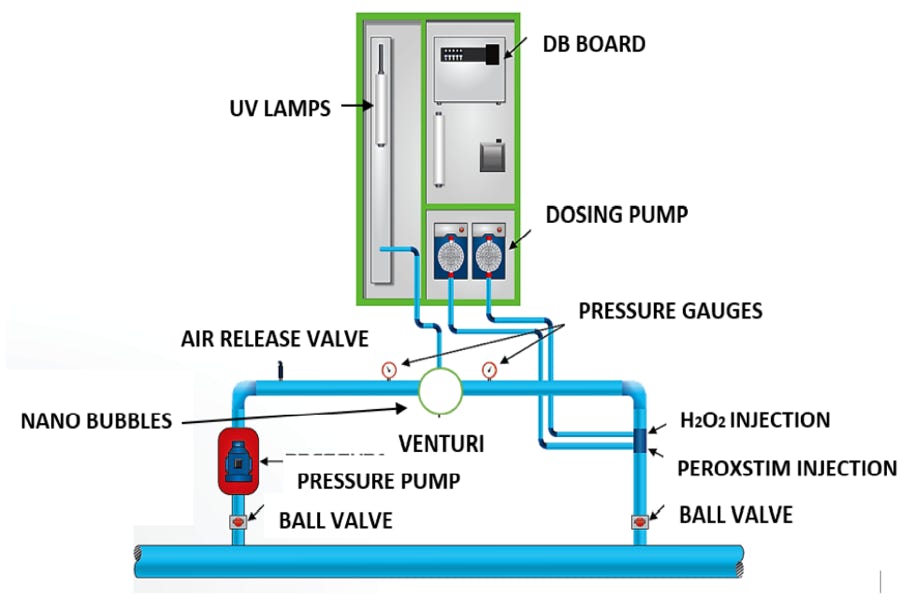
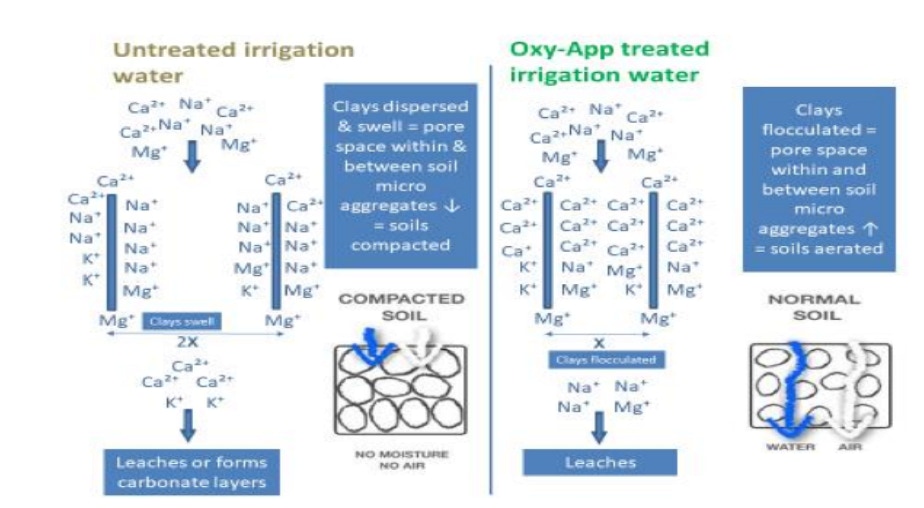
Over time Oxy-App™ treated soils will shift from the left to the right of the pie charts below, have by volume – more air, organic matter and microbes, be able to hold more water and have a more balanced mineral profile.
A diagram illustrating the effects of Oxy-App™ water treatment on calcium adsorption onto clays in untreated and treated soils, which results in aerated soils.

Soil aeration affects water infiltration. Poor soil aeration restricts water infiltration and results in puddling or pooling of water on the soil surface. This leads to poor root function and plant growth, as well as reduced nutrient availability and cycling by soil microbes. Pooling and constant high soil saturation decreases soil strength, destroys soil structure, increases detachment of soil particles, and makes soil more erodible. Pooling of water on the soil surface increases evaporative loss and in turn leads to higher water usage but limited availability for plant growth.
The Oxi-App™ technology enables farmers to farm with water unsuitable for irrigation, for example even in extreme cases of saline water with a TDS of ≤ 5000 ppm, without having to resort to Reverse Osmosis systems. The effects of brackish water on crops are reduced by the Oxi-App™ in various ways. Firstly, calcium and magnesium ion recombination with HCO₃ and CO₃ anions to form salts is minimised, calcium availability for clay adsorption is improved, and the ability of carbonates to form other salts is also reduced.
The other chemical effects brought about by Oxi-App™ in the soil are:
These are also associated with:
All farmers are confronted with sediment in their irrigation water, be it suspended clays, silts or biological matter. These commonly cause blockages of emitters in drip, micro and pivot irrigation. Emitters have very small waterways ranging from 0.2- 2.0 mm in diameter which easily becomes blocked when the water is not clean.
Sediment and biofilm (bacteria, algae etc.) can also build up in laterals thus reducing the flow of water and leads to more frequent flushing of lines and dripper maintenance, plus more regular cleaning/backwashing and replacing of filters. Fertiliser deposits and dissolved chemicals which precipitate, such as calcium and iron also combine with this sediment and biofilm to further complicate and cause blockages.
Irrigation Systems not operating at full capacity or water use efficiency result in uneven application of irrigation water to crops, run-off, puddling and evaporation with a direct impact on size, quality and hardiness of crops, resulting in lower yields, uneven growth and development. Blockages result in increased downtime, costs and manpower.
The Oxi-App™ system breaks down sediment and biofilm deposited in the system and keeps it clean, thus preventing the build-up of further blockages in the system.
With clean lines and no blockages, the irrigation system works at its full capacity, delivering the correct amount of water and fertiliser where needed. This results in even water and fertiliser delivery, uniform crops, less downtime, less costs, and less manpower with even crop development.
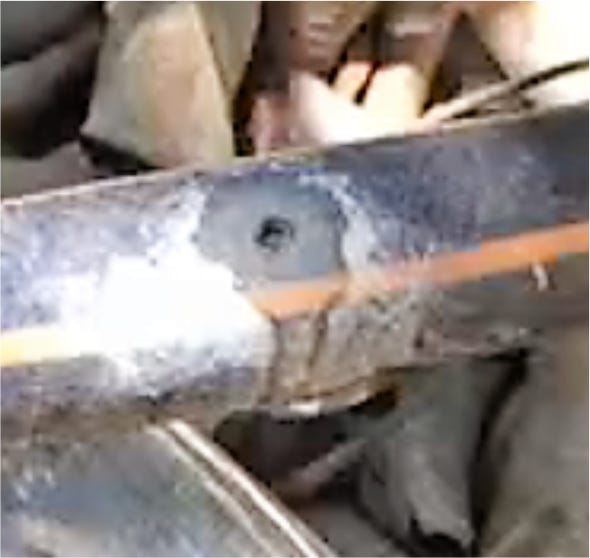
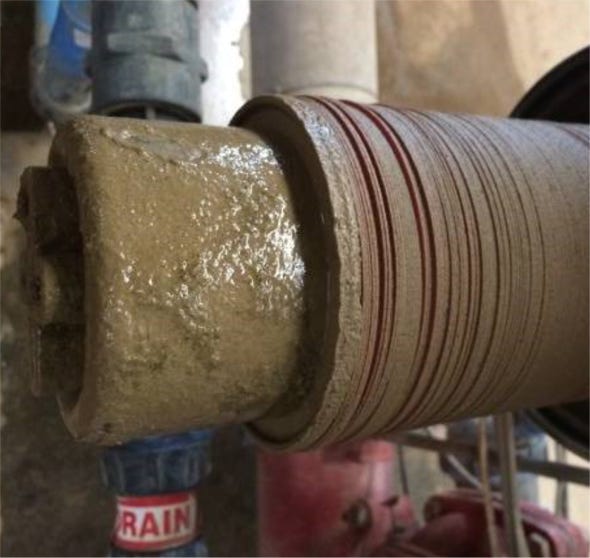
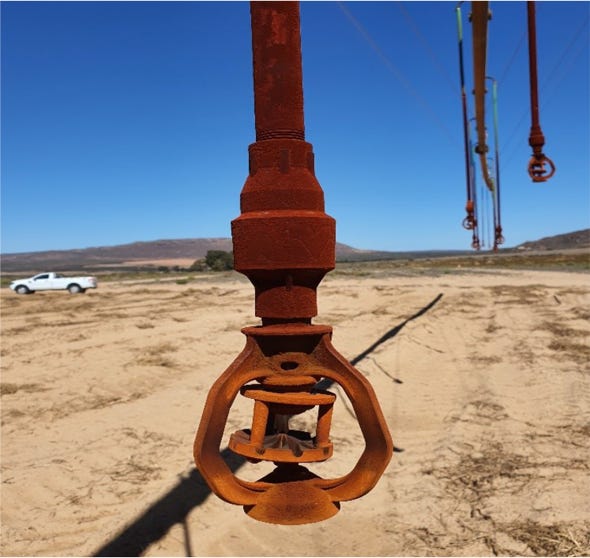
The effects of the Intense Oxidation Technology (IOT), and Nanobubbles (NBT) as applied by the Oxy-App™ system in the irrigation water aerate both the water and the soil contributing to abundant root growth and better root distribution. The more abundant and healthier the hair roots of plants, the better they will absorb water and the essential plant nutrients. Into this improved soil environment one now adds the biostimulant Peroxstim™ to stimulate and maintain soil microbial populations.
The combined IOT, NBT and Peroxstim™ solution as applied in the Oxy-App™ creates an environment for soil biology to flourish. As with healthy root systems, soil microbes also need air, water, nutrients and organic carbon.
The traditional fertiliser concept is to feed the plant and not the micro-organisms in the root-zone. The importance of these rhizophillic microbes and their significant contribution to plant growth and overall yield is often ignored by the traditional chemical orientated fertiliser manufacturers. This has led to a decline in soil fertility world-wide requiring farmers to use more fertilisers to obtain the same results as in the past. Our purpose developed products ensure healthy and functional micro-organism populations in the root-zone so that soil mineral cycles can occur as they should and this is where the addition of the Bio-stimulant Peroxstim™ comes into play.
The unique Oxi-App™ system, a first of its kind, offers farmers a cost effective, easy to use, bio-friendly way in which to optimise irrigation water, soil health and root system development, while simultaneously ensuring that irrigation systems are clean and run at full potential.
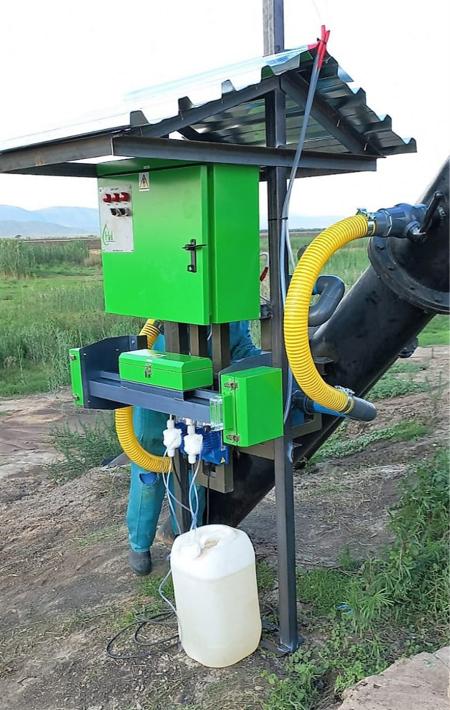
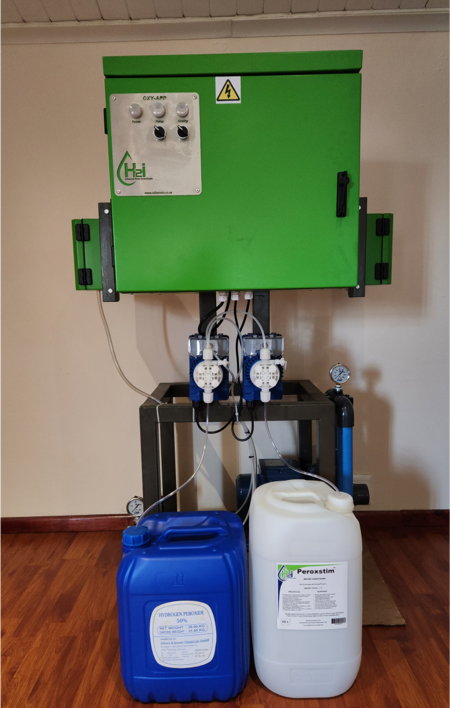
The system offers a multitude of benefits to the Agricultural Sector resulting in a higher yield, a higher quality crop and cost savings for the farmer. Most importantly the Oxi-App™ system addresses the global water crisis, contributing to effective water management on the basis that every drop counts and that every counted drop should have the optimal impact for the farmer.

Our team consists of: